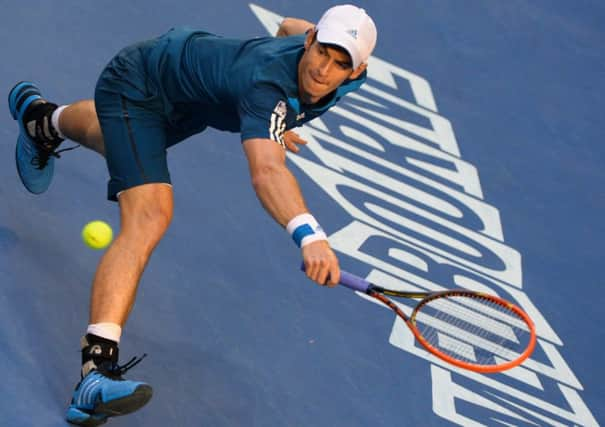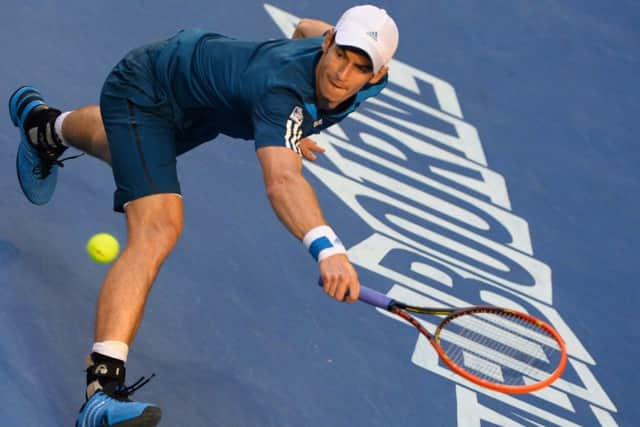No disgrace as Andy Murray’s bid ended by Federer


But, even so, Andy Murray nearly managed it. It took Roger Federer playing at his best to defeat the Scot 6-3, 6-4, 6-7, 6-3 in the quarter-finals of the Australian Open.
For two sets, the 32-year-old Swiss looked like the Federer of old. Of really old. When he was still on his way to greatness, Federer was a far more aggressive player than the all-conquering champion he became in his mid-20s but now, with Stefan Edberg to guide him, he is racing to the net, going on the offensive at every opportunity and, on the evidence of his last two wins, reinventing himself.
Advertisement
Hide AdAdvertisement
Hide AdFederer employed the new aggressive policy for the best part of three and a half hours to beat Murray who, at times, looked stiff and sore. The Scot’s back problems have been resolved by the surgery he underwent in October but, still only three weeks into his comeback, he has not built up the match fitness that comes with the weekly grind of the tour. Murray was still putting every ounce of strength into every shot but, as soon as the fourth set started, Federer noticed a slight dip in his rival’s physical powers.


“I think in the beginning he played well,” Federer said after the match. “Physically, he was fine. It seemed like, at least. Maybe at the end of the third only did I sense maybe for a second, I sensed he might be struggling on some serves but, then again, he did better when I thought he would struggle. It was one of those things.
“Once the ball was in play he played quite aggressive. He actually played well. Then, right off the bat in the fourth set, I realised he’s not that fast maybe, that things are getting a bit difficult.”
Tired he may have been, but Murray still fought tooth and nail until the bitter end.
As Federer was noting his weaknesses, Murray was hanging on to stave off six break points in a marathon 19-minute game at the start of that fourth set.
No matter how far he was made to run or how wide he was forced to lunge and stretch for the ball, Murray kept a tight grip on that service game and left Federer shaking his head in frustration.
“He did struggle more nor less throughout the fourth,” Federer said. “But he was still dangerous.”
Federer had come out of the blocks like a sprinter and it was all Murray could do to keep him in sight in the first set. But, once into the second set, the Scot pulled his old rival into longer rallies. He started to find Federer’s backhand – his weaker flank – and he created half chances for himself. Murray was still trailing by a break of serve but he was getting closer to turning the match around.
Advertisement
Hide AdAdvertisement
Hide AdThen, just when it seemed that there was nothing more the world No 4 could do, Federer got the rub of the green on a dodgy call in the third set – a double bounce was not called by the umpire, Pascal Maria – and Federer got a free point. Although Murray went on to drop his serve in that game, he was clearly furious with what had happened. And, if he needed a spark to find an extra gear and a little more gas for the tank, this was his motivation.
He broke straight back and, with fire in his eyes, won the tiebreak but, as the fatigue caught up with him, he still could not stop Federer from reaching the semi-final and an appointment with Rafael Nadal.
“I was proud of the way I fought,” Murray said. “I just need to use this as, I guess, a stepping stone to getting better and be happy that I’ve got through five matches here. The last two were particularly tough. And I’m playing at a decent level fairly quickly again. Hopefully, I’ll be back playing my best tennis soon.”
With hindsight, Murray thinks that he might have managed his comeback a little differently. He would not elaborate on exactly what he would have changed but he was desperately short of matchplay when he arrived in Melbourne. Perhaps if he had skipped the exhibition event in Abu Dhabi at the end of December and opted to play in Brisbane rather than Doha at the start of this month, he might have been in better shape.
In Doha, he played two matches, the first against a local wildcard with a world ranking of 2,129 and the second against Florian Mayer – and he lost that in three sets. In Brisbane, the opposition was stronger and the conditions – steamy 40 degree days – were more like the fierce heat he encountered in the first week in Melbourne.
But 20-20 hindsight cannot alter the fact that he lost to one of the best players in the world in the quarter-finals of a grand slam. There is no disgrace in that and, judging by the progress Murray has made in the past three weeks, he is well on the road to recovery. There may be a few ups and downs ahead as his back settles down and he gets back to full strength but the signs are more than promising.
It was a big ask expecting him to beat Federer yesterday, but Murray was not far off providing the answer.